Abdulhamit Subasi
Improved Brain Tumor Detection in MRI: Fuzzy Sigmoid Convolution in Deep Learning
May 08, 2025Abstract:Early detection and accurate diagnosis are essential to improving patient outcomes. The use of convolutional neural networks (CNNs) for tumor detection has shown promise, but existing models often suffer from overparameterization, which limits their performance gains. In this study, fuzzy sigmoid convolution (FSC) is introduced along with two additional modules: top-of-the-funnel and middle-of-the-funnel. The proposed methodology significantly reduces the number of trainable parameters without compromising classification accuracy. A novel convolutional operator is central to this approach, effectively dilating the receptive field while preserving input data integrity. This enables efficient feature map reduction and enhances the model's tumor detection capability. In the FSC-based model, fuzzy sigmoid activation functions are incorporated within convolutional layers to improve feature extraction and classification. The inclusion of fuzzy logic into the architecture improves its adaptability and robustness. Extensive experiments on three benchmark datasets demonstrate the superior performance and efficiency of the proposed model. The FSC-based architecture achieved classification accuracies of 99.17%, 99.75%, and 99.89% on three different datasets. The model employs 100 times fewer parameters than large-scale transfer learning architectures, highlighting its computational efficiency and suitability for detecting brain tumors early. This research offers lightweight, high-performance deep-learning models for medical imaging applications.
Electromyography Signal Classification Using Deep Learning
May 06, 2023Abstract:We have implemented a deep learning model with L2 regularization and trained it on Electromyography (EMG) data. The data comprises of EMG signals collected from control group, myopathy and ALS patients. Our proposed deep neural network consists of eight layers; five fully connected, two batch normalization and one dropout layers. The data is divided into training and testing sections by subsequently dividing the training data into sub-training and validation sections. Having implemented this model, an accuracy of 99 percent is achieved on the test data set. The model was able to distinguishes the normal cases (control group) from the others at a precision of 100 percent and classify the myopathy and ALS with high accuracy of 97.4 and 98.2 percents, respectively. Thus we believe that, this highly improved classification accuracies will be beneficial for their use in the clinical diagnosis of neuromuscular disorders.
* 6 pages, 3 figures and 1 table
Automatic Autism Spectrum Disorder Detection Using Artificial Intelligence Methods with MRI Neuroimaging: A Review
Jun 20, 2022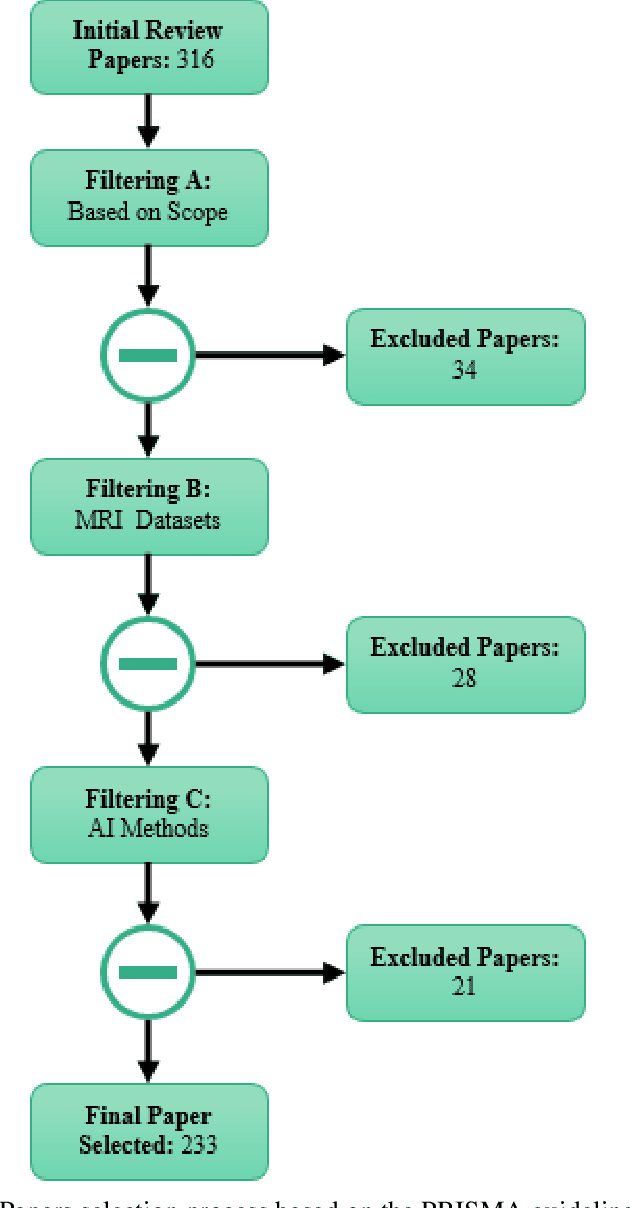

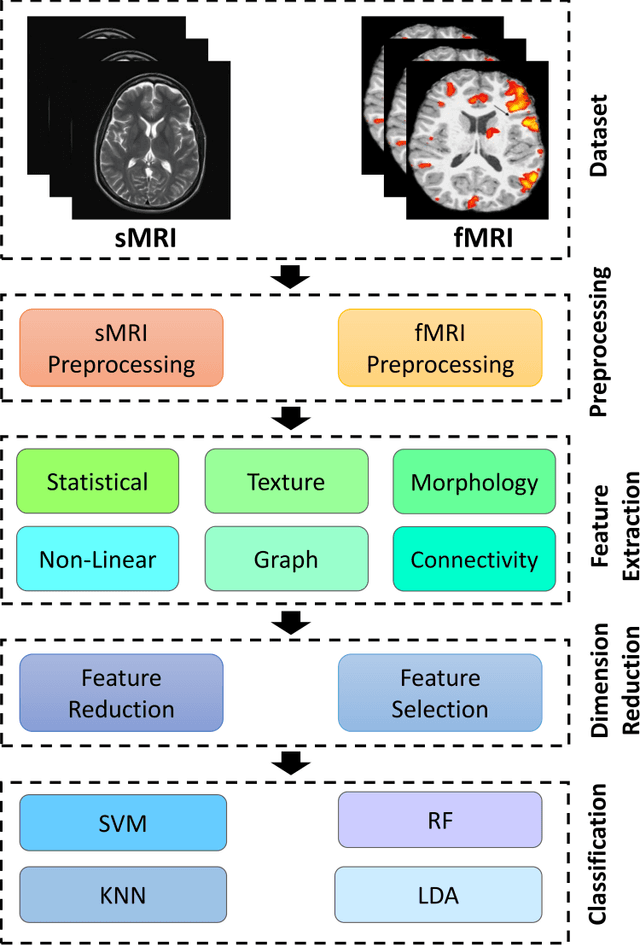
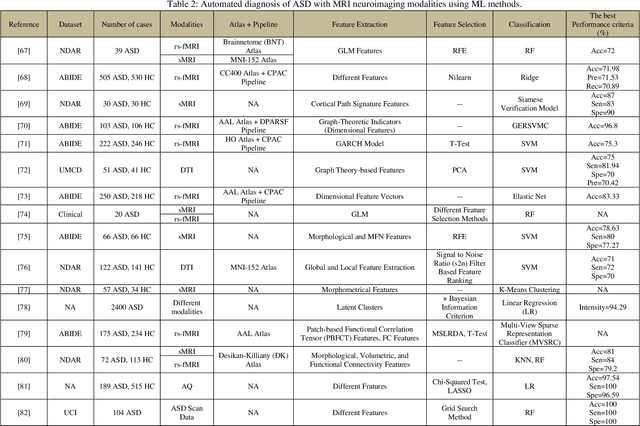
Abstract:Autism spectrum disorder (ASD) is a brain condition characterized by diverse signs and symptoms that appear in early childhood. ASD is also associated with communication deficits and repetitive behavior in affected individuals. Various ASD detection methods have been developed, including neuroimaging modalities and psychological tests. Among these methods, magnetic resonance imaging (MRI) imaging modalities are of paramount importance to physicians. Clinicians rely on MRI modalities to diagnose ASD accurately. The MRI modalities are non-invasive methods that include functional (fMRI) and structural (sMRI) neuroimaging methods. However, the process of diagnosing ASD with fMRI and sMRI for specialists is often laborious and time-consuming; therefore, several computer-aided design systems (CADS) based on artificial intelligence (AI) have been developed to assist the specialist physicians. Conventional machine learning (ML) and deep learning (DL) are the most popular schemes of AI used for diagnosing ASD. This study aims to review the automated detection of ASD using AI. We review several CADS that have been developed using ML techniques for the automated diagnosis of ASD using MRI modalities. There has been very limited work on the use of DL techniques to develop automated diagnostic models for ASD. A summary of the studies developed using DL is provided in the appendix. Then, the challenges encountered during the automated diagnosis of ASD using MRI and AI techniques are described in detail. Additionally, a graphical comparison of studies using ML and DL to diagnose ASD automatically is discussed. We conclude by suggesting future approaches to detecting ASDs using AI techniques and MRI neuroimaging.
Detection of Epileptic Seizures on EEG Signals Using ANFIS Classifier, Autoencoders and Fuzzy Entropies
Sep 06, 2021
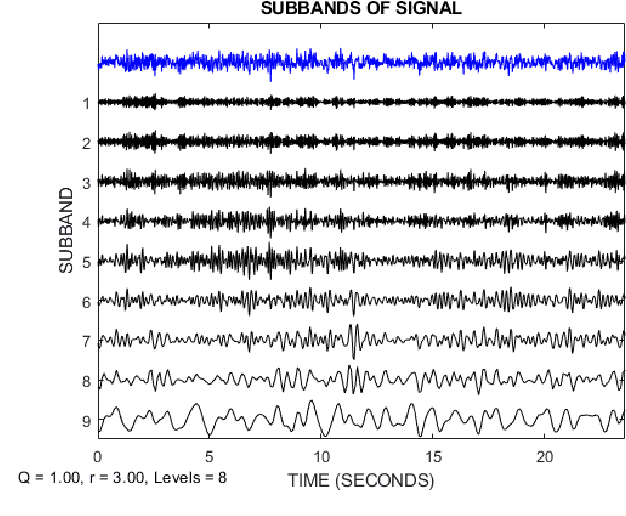
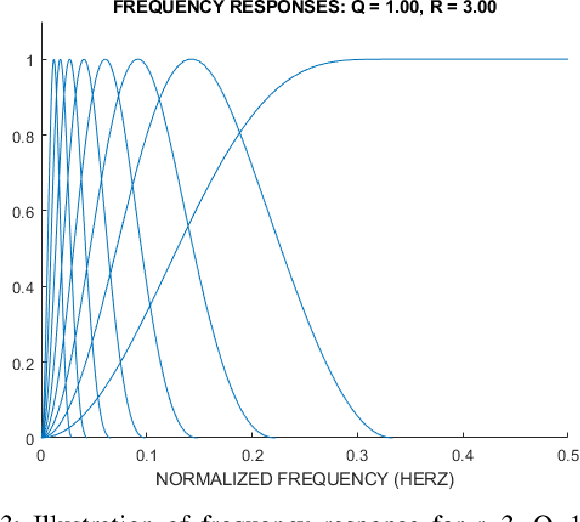
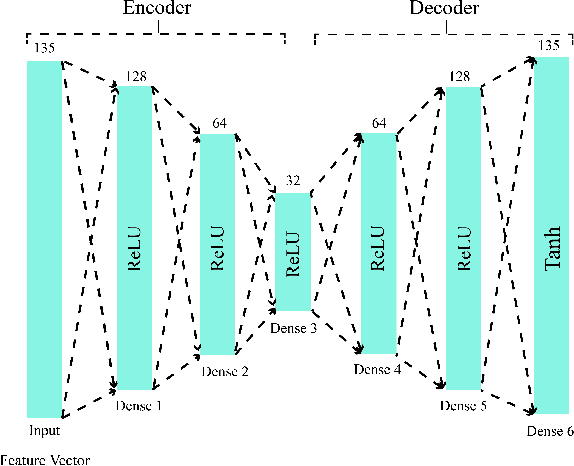
Abstract:Epilepsy is one of the most crucial neurological disorders, and its early diagnosis will help the clinicians to provide accurate treatment for the patients. The electroencephalogram (EEG) signals are widely used for epileptic seizures detection, which provides specialists with substantial information about the functioning of the brain. In this paper, a novel diagnostic procedure using fuzzy theory and deep learning techniques are introduced. The proposed method is evaluated on the Bonn University dataset with six classification combinations and also on the Freiburg dataset. The tunable-Q wavelet transform (TQWT) is employed to decompose the EEG signals into different sub-bands. In the feature extraction step, 13 different fuzzy entropies are calculated from different sub-bands of TQWT, and their computational complexities are calculated to help researchers choose the best feature sets. In the following, an autoencoder (AE) with six layers is employed for dimensionality reduction. Finally, the standard adaptive neuro-fuzzy inference system (ANFIS), and also its variants with grasshopper optimization algorithm (ANFIS-GOA), particle swarm optimization (ANFIS-PSO), and breeding swarm optimization (ANFIS-BS) methods are used for classification. Using our proposed method, ANFIS-BS method has obtained an accuracy of 99.74% in classifying into two classes and an accuracy of 99.46% in ternary classification on the Bonn dataset and 99.28% on the Freiburg dataset, reaching state-of-the-art performances on both of them.
Automatic detection of abnormal EEG signals using wavelet feature extraction and gradient boosting decision tree
Dec 18, 2020



Abstract:Electroencephalography is frequently used for diagnostic evaluation of various brain-related disorders due to its excellent resolution, non-invasive nature and low cost. However, manual analysis of EEG signals could be strenuous and a time-consuming process for experts. It requires long training time for physicians to develop expertise in it and additionally experts have low inter-rater agreement (IRA) among themselves. Therefore, many Computer Aided Diagnostic (CAD) based studies have considered the automation of interpreting EEG signals to alleviate the workload and support the final diagnosis. In this paper, we present an automatic binary classification framework for brain signals in multichannel EEG recordings. We propose to use Wavelet Packet Decomposition (WPD) techniques to decompose the EEG signals into frequency sub-bands and extract a set of statistical features from each of the selected coefficients. Moreover, we propose a novel method to reduce the dimension of the feature space without compromising the quality of the extracted features. The extracted features are classified using different Gradient Boosting Decision Tree (GBDT) based classification frameworks, which are CatBoost, XGBoost and LightGBM. We used Temple University Hospital EEG Abnormal Corpus V2.0.0 to test our proposed technique. We found that CatBoost classifier achieves the binary classification accuracy of 87.68%, and outperforms state-of-the-art techniques on the same dataset by more than 1% in accuracy and more than 3% in sensitivity. The obtained results in this research provide important insights into the usefulness of WPD feature extraction and GBDT classifiers for EEG classification.
Intrusion Detection on Smartphones
Nov 28, 2012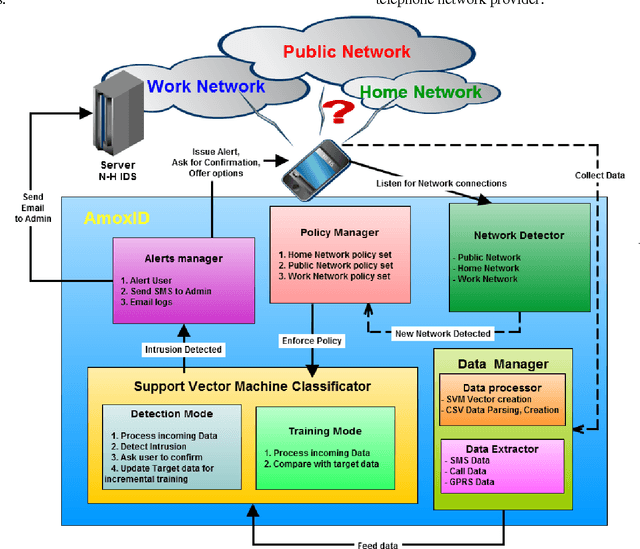
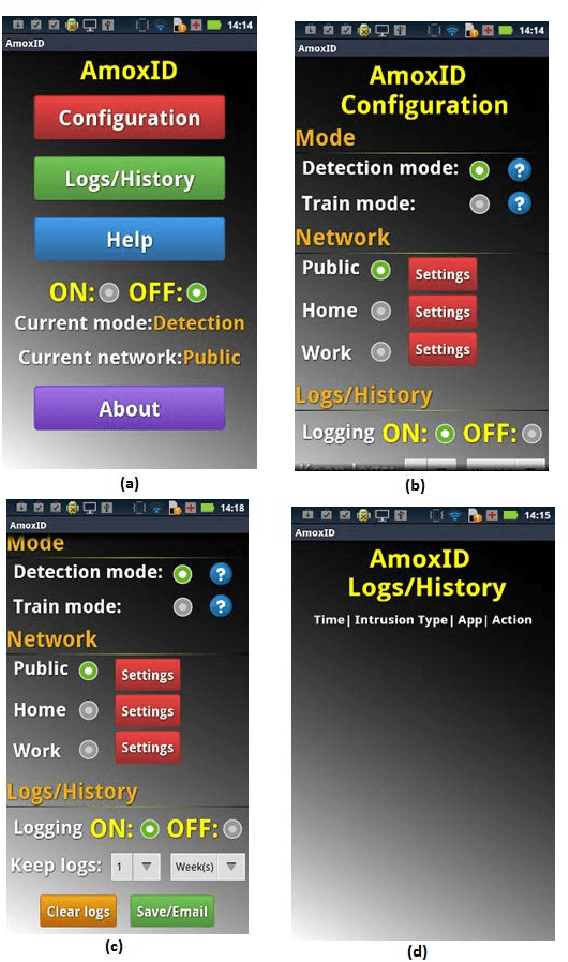
Abstract:Smartphone technology is more and more becoming the predominant communication tool for people across the world. People use their smartphones to keep their contact data, to browse the internet, to exchange messages, to keep notes, carry their personal files and documents, etc. Users while browsing are also capable of shopping online, thus provoking a need to type their credit card numbers and security codes. As the smartphones are becoming widespread so do the security threats and vulnerabilities facing this technology. Recent news and articles indicate huge increase in malware and viruses for operating systems employed on smartphones (primarily Android and iOS). Major limitations of smartphone technology are its processing power and its scarce energy source since smartphones rely on battery usage. Since smartphones are devices which change their network location as the user moves between different places, intrusion detection systems for smartphone technology are most often classified as IDSs designed for mobile ad-hoc networks. The aim of this research is to give a brief overview of IDS technology, give an overview of major machine learning and pattern recognition algorithms used in IDS technologies, give an overview of security models of iOS and Android and propose a new host-based IDS model for smartphones and create proof-of-concept application for Android platform for the newly proposed model. Keywords: IDS, SVM, Android, iOS;
 Add to Chrome
Add to Chrome Add to Firefox
Add to Firefox Add to Edge
Add to Edge